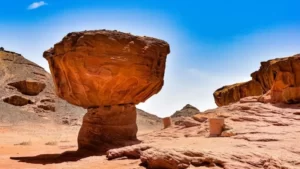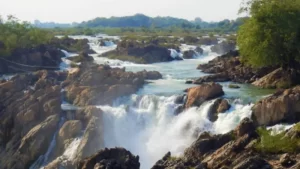Nestled in the heart of the Judean Desert in Israel, Masada National Park stands as a testament to human resilience, ancient history, and breathtaking natural beauty.
This extraordinary UNESCO World Heritage Site draws countless visitors each year, eager to delve into its rich historical significance, explore its stunning landscapes, and immerse themselves in a captivating journey through time.
In this article, we will take you on a comprehensive tour of Masada National Park, covering its history, reasons to visit, location and route, best times to explore, and the remarkable attractions that await you.
History
Masada National Park is synonymous with one of the most iconic tales of defiance and courage in human history. Its story dates back to the first century CE, during the tumultuous period of Roman rule over Judea. Herod the Great, the renowned ruler, constructed a formidable fortress atop Masada, perched on a rock plateau rising 400 meters above the Dead Sea.
The site gained global recognition due to the Siege of Masada, which took place from 73 to 74 CE. After the fall of Jerusalem and the destruction of the Second Temple, a group of Jewish rebels sought refuge in the fortress, defying Roman authority.
For several months, the Roman army, led by General Flavius Silva, laid siege to Masada. Despite facing dire circumstances, the rebels valiantly held their ground. Eventually, realizing defeat was inevitable, they chose death over surrender, a poignant testament to their unwavering spirit.
Why Visit Masada National Park
1. Historical Significance
Masada’s story has transcended time, representing the epitome of Jewish resistance and fortitude. Visiting the site allows you to immerse yourself in this compelling narrative and gain a profound understanding of the struggles and triumphs of the Jewish people.
2. Spectacular Views
As you ascend the snake path or ride the cable car to the fortress, you will be rewarded with breathtaking panoramic views of the surrounding desert and the mesmerizing Dead Sea. The vistas from the summit are nothing short of awe-inspiring, offering a unique perspective on nature’s wonders.
3. Architectural Marvel
Exploring the remnants of Herod’s palace, the Roman ramp, and the ancient synagogue will transport you back in time. The architectural splendor of Masada showcases Herodian grandeur, offering glimpses into the lavish lifestyle of the ruling elite of the era.
4. Outdoor Adventures
Masada National Park is not just a historical site; it also boasts remarkable natural landscapes. Hiking enthusiasts can enjoy the rugged beauty of the Judean Desert, explore the Ein Gedi Nature Reserve, or take a dip in the therapeutic waters of the Dead Sea.
Location and Route
Masada National Park is located on the eastern edge of the Judean Desert, near the southwestern shores of the Dead Sea. It is approximately 20 kilometers east of Arad and 45 kilometers east of the city of Beersheba.
To reach Masada, you can drive from major cities in Israel or opt for public transportation. Buses operate from Jerusalem, Tel Aviv, and other significant urban centers, providing convenient access to the site. Additionally, organized tours are available for visitors who prefer a guided experience.
The main entrance to the park is situated at the foot of the mountain, where you can choose between hiking the snake path, a steep and challenging trail, or taking the cable car for a more effortless ascent.
When to Visit
The ideal time to visit Masada National Park is during the spring (March to May) and autumn (September to November) when temperatures are moderate, making outdoor exploration more comfortable. Summers can be scorching, with temperatures exceeding 40°C (104°F), so if visiting during this period, it is advisable to arrive early in the morning to beat the heat.
What to See
1. Herod’s Palace
Explore the opulent remains of the palace complex, which once housed extravagant living quarters, bathhouses, and gardens. Admire the intricate mosaics, frescoes, and Roman-inspired architecture that reflect the grandeur of the era.
2. Roman Ramp
Witness the incredible engineering feat of the Roman ramp, constructed by the Roman army during the siege. The ramp stands as a testament to the determination of the Romans to conquer the fortress.
3. Ancient Synagogue
Discover the ruins of an ancient synagogue, believed to be one of the oldest synagogues in the world. Observe the intricate stone carvings and learn about the religious and cultural practices of the Jewish community that once thrived at Masada.
4. Museum and Visitor Center
Immerse yourself in the history of Masada through the museum’s exhibits, which provide detailed information about the site’s significance and the events that unfolded during the Roman siege. The visitor center offers additional resources, audio guides, and a film screening to enhance your understanding.
Conclusion
Masada National Park stands as a poignant symbol of human resilience, ancient history, and natural splendor. Visiting this remarkable UNESCO World Heritage Site provides an opportunity to immerse oneself in the captivating story of Jewish resistance, explore architectural wonders, and experience the breathtaking landscapes of the Judean Desert. Whether you are a history enthusiast, nature lover, or simply seeking a transformative journey, Masada National Park is an absolute must-visit destination that will leave an indelible mark on your soul.







